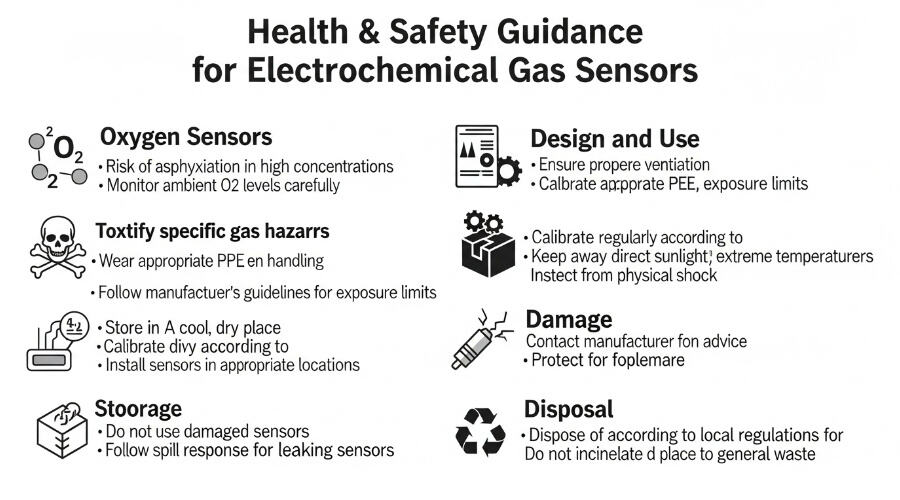CiTiceL electrochemical gas sensors are sealed components that pose no chemical hazards under normal use, complying with the "Control of Substances Hazardous to Health Regulations (COSHH)" and the Health and Safety at Work Act 1974. However, leaks caused by improper use, abuse, or manufacturing defects may present chemical risks. To avoid potential issues, pay attention to the storage, use, handling, and disposal of CiTiceL products.
CiTiceL oxygen sensors use a four-cell potassium acetate solution, which is corrosive. Leakage of this material typically occurs only due to mechanical damage (crushing or piercing) or improper power handling (e.g., attempting to input charge). CiTiceL oxygen sensors contain small amounts of lead, lead oxide, platinum, silver, carbon, and antimony, some of which are toxic and/or mutagenic. If users come into contact with the internal materials of CiTiceL oxygen sensors, they should rinse the affected skin thoroughly with water and consult a doctor for further treatment. Dispose of these sensors containing highly toxic compounds in accordance with local waste management requirements and environmental regulations. Do not incinerate such sensors to avoid generating toxic fumes.
Most CiTiceL toxic gas sensors contain sulfuric acid electrolytes and are therefore corrosive. These sensors also contain platinum, ruthenium, gold, silver, and carbon, some of which are toxic. In case of skin or eye contact with the internal components of these CiTiceL sensors, immediately flush the affected area with plenty of clean water and consult a doctor for further treatment.
CiTiceL sensors are sealed components containing aqueous electrolytes and other substance combinations. If CiTiceL products are used solely for their intended design purposes, they pose no industrial hazards. CiTiceL products must not be exposed to temperatures outside the range of -50°C to 60°C. CiTiceL toxic gas sensors should not be placed in organic vapors, as this may cause physical damage to sensor components (e.g., dichloroethane in the first example).
To maximize shelf life, CiTiceL products should be stored in a clean, dry container at temperatures between 0°C and 20°C. Do not store products with organic solvents or flammable liquids.
If a CiTiceL product is severely damaged and leaking, take the following steps:
a. Wear protective gloves to avoid skin contact with any liquids or internal components.
b. Disconnect the CiTiceL product from any connected equipment.
c. This is critical because CiTiceL products containing sulfuric acid or phosphoric acid are corrosive and may damage equipment.
All CiTiceL products, regardless of physical characteristics, contain toxic compounds. Dispose of them in accordance with local waste management requirements and environmental regulations. Do not incinerate such sensors to prevent the release of toxic smoke.

 Hot News
Hot News2025-10-29
2025-10-22
2025-10-28
2025-10-28
2025-10-28
2025-09-15